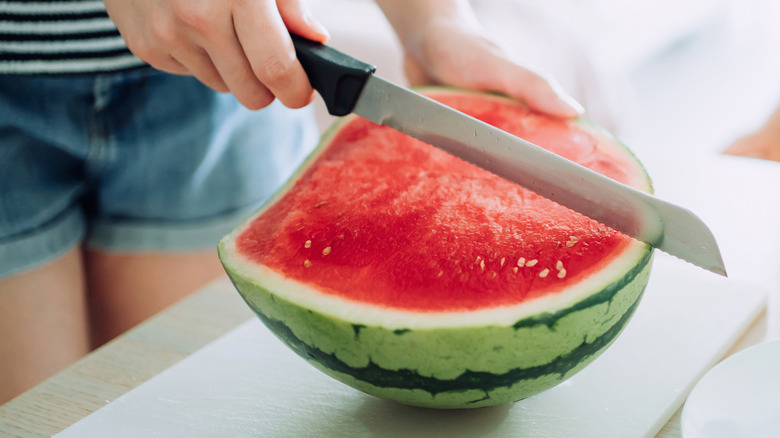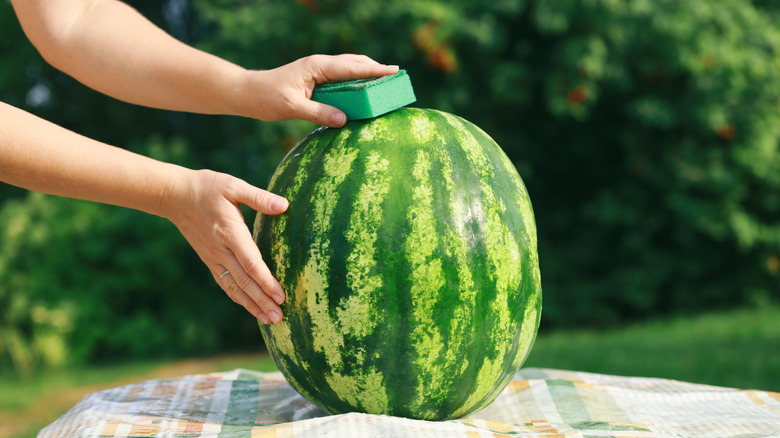The Watermelon Cutting Mistake That Could Make You Sick
When watermelon season finally comes around it's always exciting to see these green-striped beauties waiting to be picked up from the grocery stores or farms. However, once you pick out the best watermelon, the last thing you want to do is slice into it before giving it a thorough wash. This rule applies to any type of produce whether we're eating the rind or not. The reason behind this is that produce, from the moment it starts growing to the time it reaches our homes, can be exposed to various bacteria beyond human handling. Cutting through the rind of an unwashed watermelon allows the germs on the outside to travel inside the flesh, which we then eat raw. While germs are inevitable, produce that grows close to the ground like watermelon is particularly susceptible to encountering bacterial pathogens that can lead to foodborne illnesses. In some cases, these can even be life-threatening.
Harmful pathogens originate from various sources of contamination: animal feces, water runoff during precipitation events, and soil leaching into groundwater. Over the past decade, salmonella, E. coli, and listeria have been the most common bacterial pathogens linked to foodborne illnesses from fresh produce. These pathogens were also recently found in potato recalls that affected millions of people, and there was a significant recall of both pre-sliced and whole cantaloupe in 2023.
How to practice safe slicing
Ingesting any of these foodborne illnesses could make anyone sick, but it is more dangerous for certain populations such as infants, young children, pregnant women, elderly individuals, and those with pre-existing illnesses or immunocompromising conditions. Different foodborne illnesses can cause varying symptoms, but flu-like symptoms are typically the most common.
However, the risk of contracting foodborne illnesses, especially from melon, can be significantly reduced by thoroughly washing the fruit before cutting and eating. First, ensure your hands are washed after touching the melon. Next, fill a spray bottle with an antibacterial solution of water and distilled white vinegar or apple cider vinegar in a four-to-one ratio (four cups of water for every one cup of vinegar). Spray the entire outside surface of the melon and then scrub it with a very clean produce brush. Finally, rinse the melon thoroughly and dry it with a clean kitchen towel. Make sure any surface the watermelon touched has been thoroughly disinfected, especially if you intend to slice on it.

